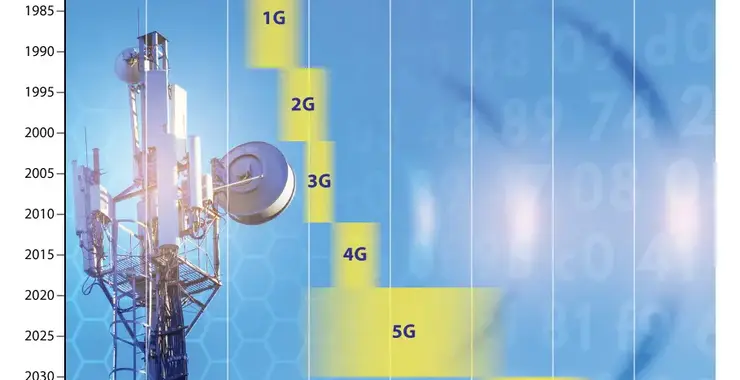Welcome back, my aspiring cyberwarriors!
The world is rapidly becoming dominated by mobile cellular networks. Not long ago, telecom services were tethered to a cable to each and every home. While this worked well for decades, the advent of cellular technologies has enable us to cut the cord thereby enabling billions of people who previously had no home telephone service, to have their own service and handset. This has had a transformational impact on the world.
Now, billions of people have access to the Internet and can message anyone, anywhere on the world! This has brought billions of people into our digital domain that would not otherwise have access to it.
The downside of this transformation is that data and personal lives are available to anyone who can hack this system. Many of the technologies and security measures in the global mobile, telecom system are antiquated. This makes access to all of our data at risk (at the time of this writing, Chinese state hackers have compromised the entire US mobile, cellular network and are scooping up information and messages from millions of Americans through the vulnerability known as SS7. Look for more on the SS7 vulnerability here in an upcoming article).
In this series, we will try to enlighten you on how these ubiquitous networks work and how these break!
Let’s Get Started with Mobile Networks!
Cellular networks have traditionally been the domain of large telecommunications companies and national operators. The massive infrastructure investment required—often in the billions of dollars—made it nearly impossible for smaller organizations to build their own networks. However, technological advances over the past decade have dramatically changed this landscape.
The evolution of software-defined radio (SDR) technology, combined with open-source cellular network software and decreasing hardware costs, has transformed what was once exclusively the realm of major telecom operators.
Understanding how cellular networks function isn’t just academic—it’s becoming increasingly relevant as private cellular networks emerge across various sectors. Manufacturing facilities are building their own 5G networks for automation and IoT devices. Remote mining operations are deploying private LTE networks for reliable communications. Even smaller organizations are exploring private cellular infrastructure for enhanced security and independence from commercial carriers.
Let’s take a look at the technical foundations of modern cellular networks.
Historical Evolution
The first commercial cellular network launched in Japan in 1979, followed by the Nordic Mobile Telephone system in 1981. These first-generation (1G) networks used analog transmission techniques primarily for voice communications. The technology operated in the 800-900 MHz frequency bands and employed Frequency Division Multiple Access (FDMA) for channel allocation.
The transition to digital communication marked the advent of second-generation (2G) systems in the early 1990s. GSM, the most successful 2G standard, introduced Time Division Multiple Access (TDMA) and brought significant improvements in spectral efficiency. This generation also saw the first digital data services, though at very modest speeds of 9.6 kbps initially.
Third-generation (3G) networks, launched in the early 2000s, marked a significant technological leap. Code Division Multiple Access (CDMA) technology enabled much higher data rates and better spectrum utilization. UMTS, the primary 3G standard, introduced sophisticated power control mechanisms and adaptive modulation schemes that would become crucial for modern cellular systems.

Fourth-generation (4G) networks, based on Long Term Evolution (LTE) technology, revolutionized mobile data communications. The introduction of Orthogonal Frequency Division Multiple Access (OFDMA) and sophisticated Multiple Input Multiple Output (MIMO) techniques enabled data rates approaching 1Gbps under ideal conditions. This generation also marked the transition to an all-IP architecture, fundamentally changing how networks handle voice and data services.
The current fifth-generation (5G) networks represent the culmination of decades of technological advancement, introducing millimeter wave frequencies, massive MIMO arrays, and network slicing capabilities. These technologies enable unprecedented bandwidth, extremely low latency, and the ability to serve vastly more connected devices.
The Foundation of Cellular Networks
At its core, a cellular network operates through the interaction of mobile devices, base stations, and core network infrastructure. Mobile devices, such as smartphones and tablets, communicate via radio waves with nearby base stations, commonly known as cell towers. These base stations serve as the crucial link between mobile devices and the broader telecommunications network.
The innovation of cellular network design lies in its cellular structure, from which it derives its name. Geographic areas are conceptually divided into hexagonal cells, though in reality, the coverage areas are irregular due to terrain and obstacles. Each cell is served by a base station equipped with transmitters, receivers, and control electronics. This hexagonal pattern proves mathematically optimal for coverage and allows for efficient frequency reuse across the network.

Signal Transmission and Routing
Signal transmission in cellular networks involves a complex interplay of radio waves and digital processing. When you make a call or request data, your device establishes a radio connection with the nearest base station. The base station processes this signal and routes it through the core network infrastructure, which acts as the backbone of the entire system. The core network then directs your communication to its destination, whether that’s another mobile device, a landline phone, or an internet server.
The network employs sophisticated frequency management techniques to handle numerous simultaneous connections. Rather than using a single frequency band, modern networks utilize multiple frequencies to support different services and optimize performance. This approach allows networks to provide voice calls, text messages, and high-speed data simultaneously while minimizing interference between users.
The Handoff Process
One of the most remarkable aspects of cellular networks is their ability to maintain connections while users move between cells. This process, known as handoff or handover, requires precise coordination between network components. As you travel, your device continuously monitors signal strength from surrounding base stations. When your device detects that a neighboring cell’s signal is becoming stronger than your current connection, it initiates a handoff sequence.

The network must execute this transfer without dropping your call or interrupting your data session. It coordinates with multiple base stations simultaneously, ensuring a new connection is established before releasing the old one. This process happens so quickly and seamlessly that users rarely notice it occurring.
Modern Network Technologies
Contemporary cellular networks have evolved far beyond their original voice-only capabilities. Modern base stations employ Multiple Input Multiple Output (MIMO) technology, using multiple antennas to improve capacity and reliability. Beamforming technology allows networks to focus signals directly toward specific devices, improving efficiency and reducing interference.

In dense urban areas, networks increasingly deploy small cells – miniature base stations that supplement traditional towers. These small cells help handle the enormous data demands of modern smartphones while improving coverage in buildings and other challenging environments. In addition, these small cells or FemtoCells can be deployed in rural areas without cell service but wired Internet access
The evolution from 1G to 5G has dramatically increased speed, capacity, and capabilities, enabling everything from basic calls to autonomous vehicles. These networks will continue to grow and evolve and with that growth will come additional vulnerabilities. Those who have a thorough understanding of these networks will be in great demand!
With the advent of Software Defined Radio (SDR), reconnaissance and attacking these networks has become cheaper and easier. In fact, it is possible to create your own private cellular network as well as create a Stingray-like device that miltaries and law enforcement use to eavesdrop on mobile communication.
For more on Software Defined Radio check out our SDR for Hackers and Advanced SDR for Hackers. In 2025, we will teaching our first SDR for Mobile Systems where many of these techniques will be taught.





